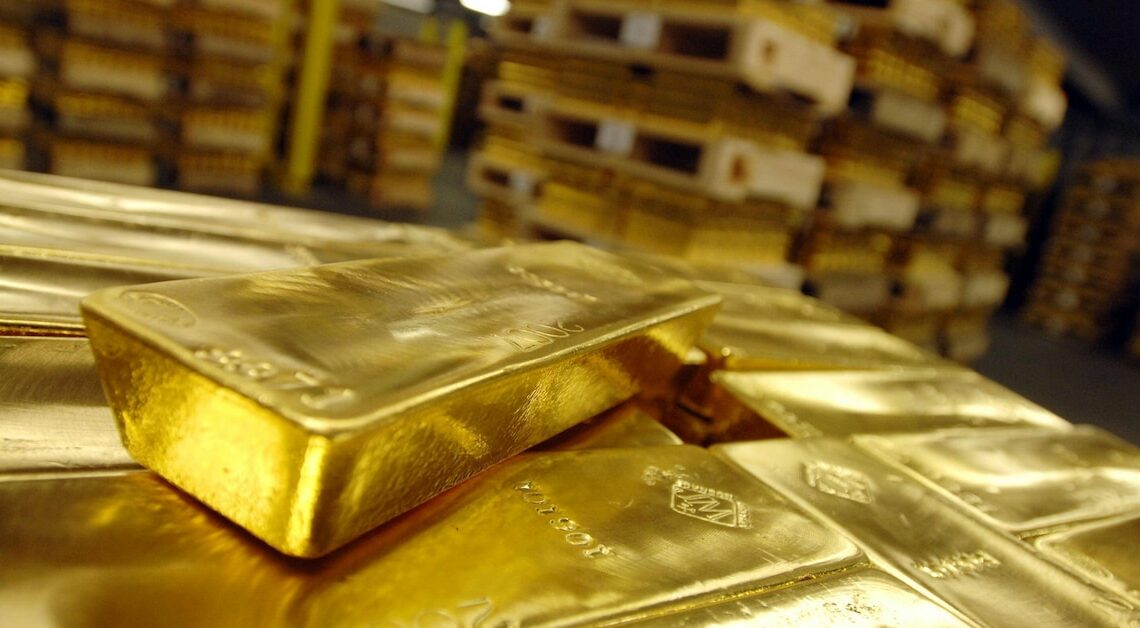
There are currently an estimated 54,000 tonnes of gold deposits that can be mined. However, it is not possible to say how many more there are.
Gold deposits: inventory and extraction
Gold is one of the most valuable and sought-after metals in the world, which is of great importance for industry, finance and the economy.
- Stock: According to the 2021 annual report of the United States Geological Survey, the gold reserves that can currently be mined amount to 54,000 tons. They are located in Australia, the USA, South Africa, Canada, Russia and China, among others. The Witwatersrand in South Africa is home to the largest deposit in the world.There is apparently also a large amount of the precious metal in space.
- Deposits: In primary deposits, gold is found in its original form, mostly in quartz veins in rocks. Some platinum metal deposits also contain gold as a byproduct.Gold is released from primary deposits by erosion and is sometimes deposited in rivers and streams and mined from there.
- Extraction: In primary depositsThe gold is extracted from the rock using physical and chemical processes such as cyanide leaching. In the anode sludge process, which is based on an electrochemical approach, the gold is separated from other metals using electrolysis. In placer mining, river deposits are sieved.
- Harmful effects: The chemicals used in gold mining or produced during it, such as cyanide, mercury or hydrogen cyanide, have a significant impact on the health of local people and the environment. Furthermore, the fight for the resource gold is associated with conflict in many regions.
- Goldbesitz: Many countries such as the USA and Germany hold gold reserves in central banks to protect themselves against economically weaker times and to support the currency. Gold is also used in industrial processing. A considerable amount of gold is also privately owned, for example as jewelry or coins.
Gold mining: problems for people and the environment
Gold mining causes considerable damage to the environment, people and nature.
- Health risks: Gold mine workers are often exposed to high concentrations of toxic chemicals, especially cyanide and mercury. In addition, inhaling fine rock dust can lead to lung diseases such as silicosis. This means that people are exposed to significant health problems.
- Environmental damage: Gold mining is often accompanied by the destruction of landscapes, such as the large-scale deforestation of rainforests. Natural habitats are destroyed and biodiversity is affected. Soil erosion occurs. Gold mining requires large quantities of water. If cyanide and mercury get into the water, it can lead to poisoning.
- Social consequences: Exploitative working conditions, inadequate health protection, and forced and child labor are often associated with gold mining. Populations in the regions are displaced and human rights are violated. Access to land, water, and other resources is severely restricted.
- Recycling is becoming increasingly important: Based on the current annual production volume, the 54,000 tonnes of gold deposits that can currently be mined could be mined in around 15 years. Gold recovery from scrap gold is not only kinder to the environment, but also less expensive.
Also interesting:
- Data is the new gold: This is what lies behind the statement
- Protect the rainforest: 10 practical everyday tips to save the tropical forest
- Valuable 50-pfennig coins: These coins are worth a lot
